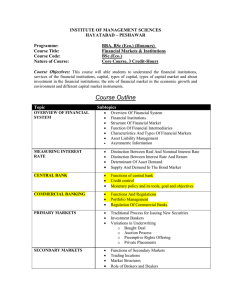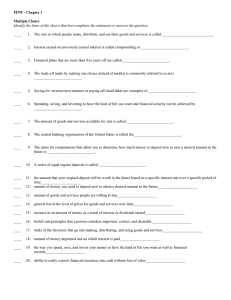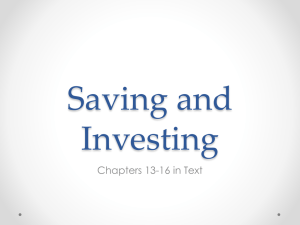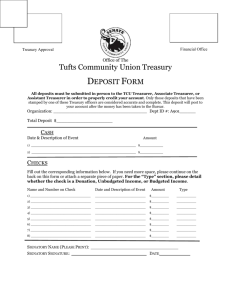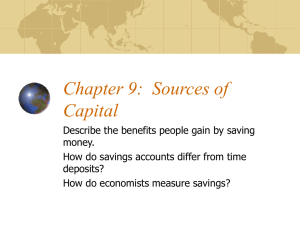lesson twelve quiz: saving and investing answer key
advertisement
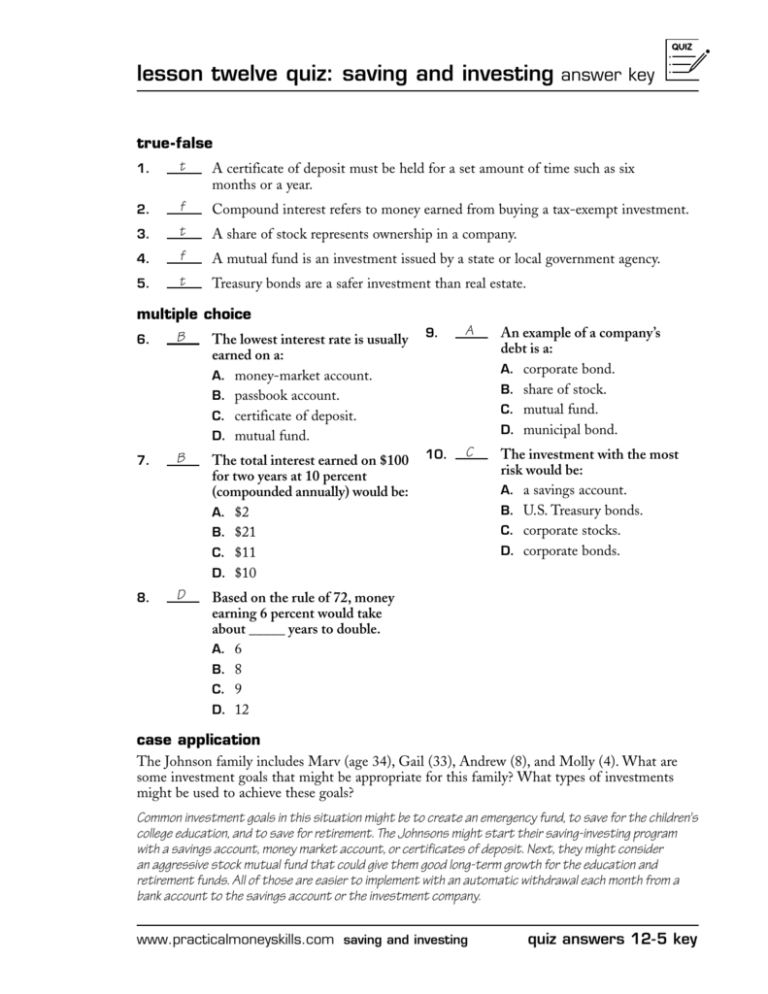
lesson twelve quiz: saving and investing answer key true-false t 1. A certificate of deposit must be held for a set amount of time such as six months or a year. f 2. Compound interest refers to money earned from buying a tax-exempt investment. 3. t A share of stock represents ownership in a company. 4. f A mutual fund is an investment issued by a state or local government agency. 5. t Treasury bonds are a safer investment than real estate. multiple choice B 6. The lowest interest rate is usually earned on a: A. money-market account. B. passbook account. C. certificate of deposit. D. mutual fund. B 7. The total interest earned on $100 for two years at 10 percent (compounded annually) would be: A. $2 B. $21 C. $11 D. $10 D 8. Based on the rule of 72, money earning 6 percent would take about _____ years to double. A. 6 B. 8 C. 9 D. 12 9. A An example of a company’s debt is a: A. corporate bond. B. share of stock. C. mutual fund. D. municipal bond. 10. C The investment with the most risk would be: A. a savings account. B. U.S. Treasury bonds. C. corporate stocks. D. corporate bonds. case application The Johnson family includes Marv (age 34), Gail (33), Andrew (8), and Molly (4). What are some investment goals that might be appropriate for this family? What types of investments might be used to achieve these goals? Common investment goals in this situation might be to create an emergency fund, to save for the children's college education, and to save for retirement. The Johnsons might start their saving-investing program with a savings account, money market account, or certificates of deposit. Next, they might consider an aggressive stock mutual fund that could give them good long-term growth for the education and retirement funds. All of those are easier to implement with an automatic withdrawal each month from a bank account to the savings account or the investment company. www.practicalmoneyskills.com saving and investing quiz answers 12-5 key
